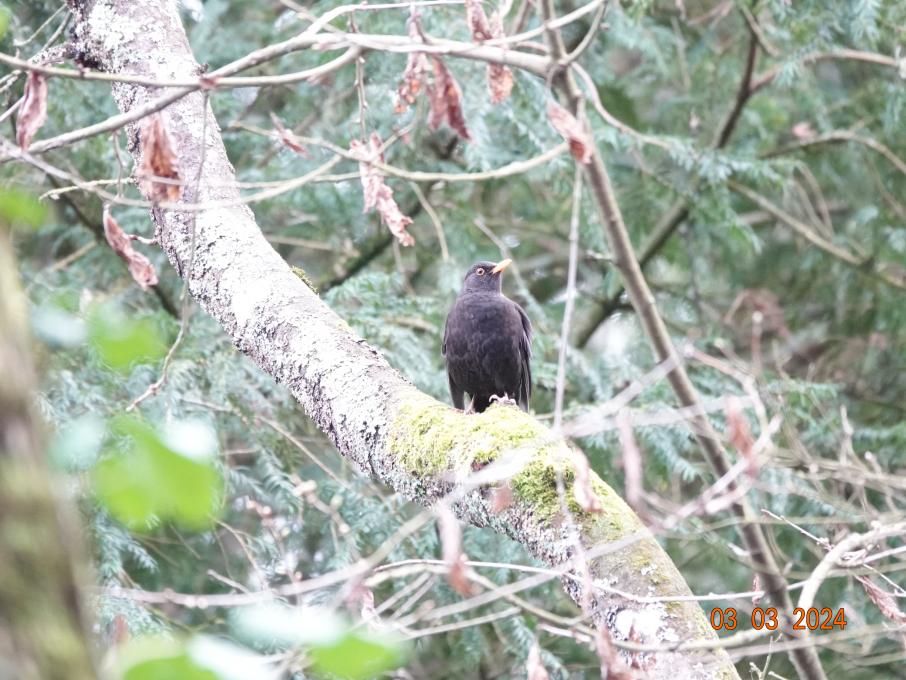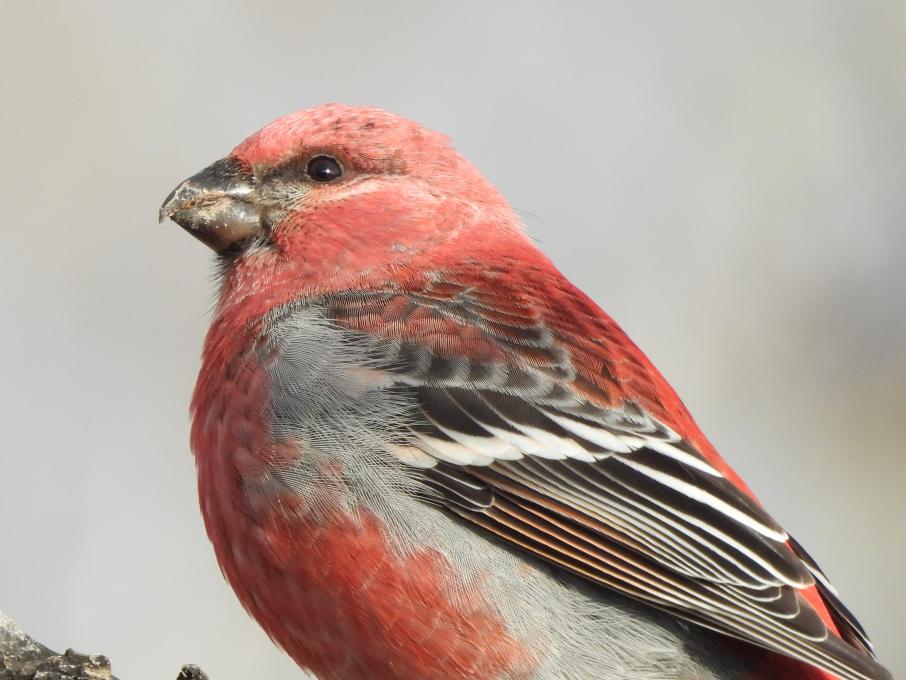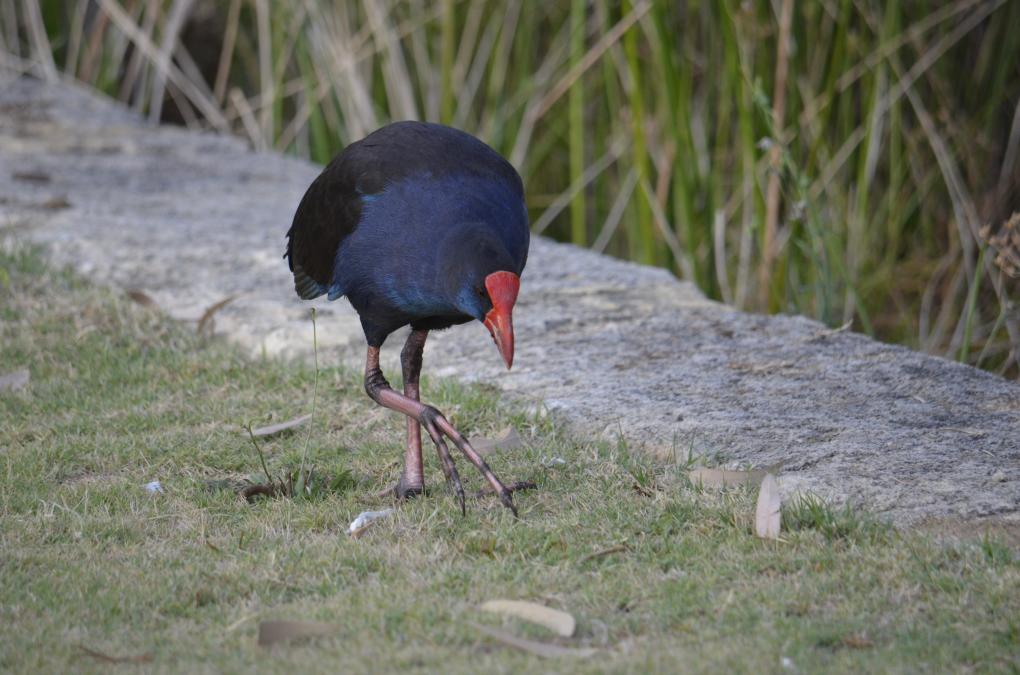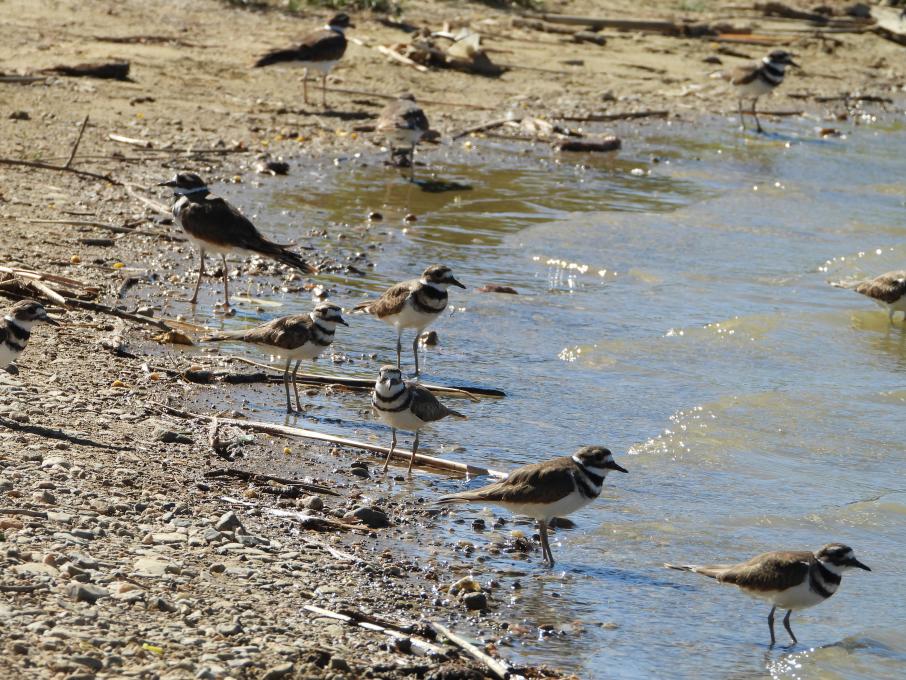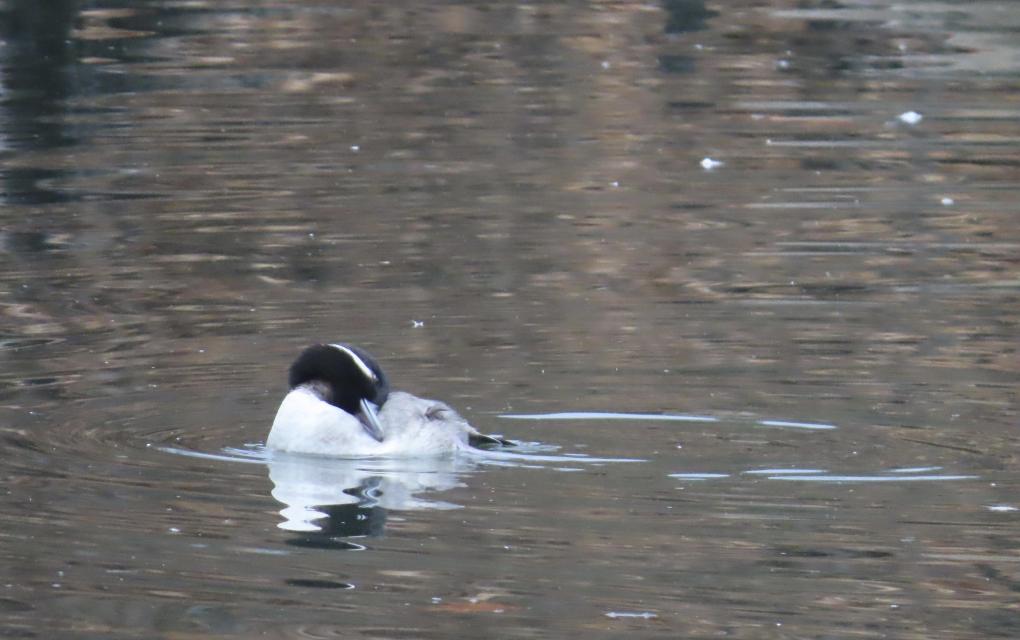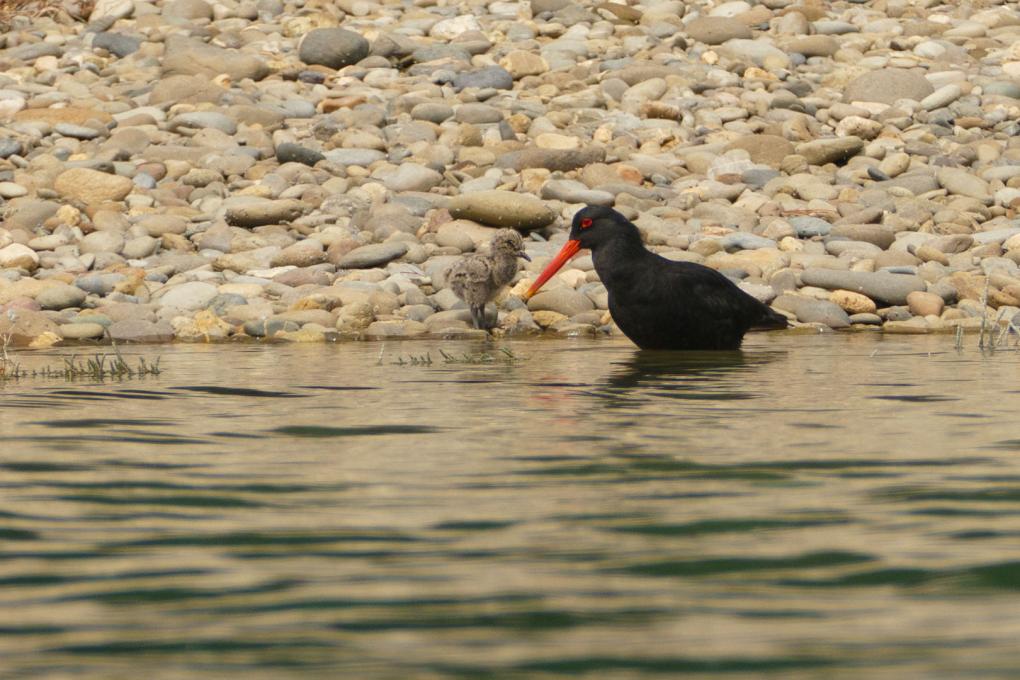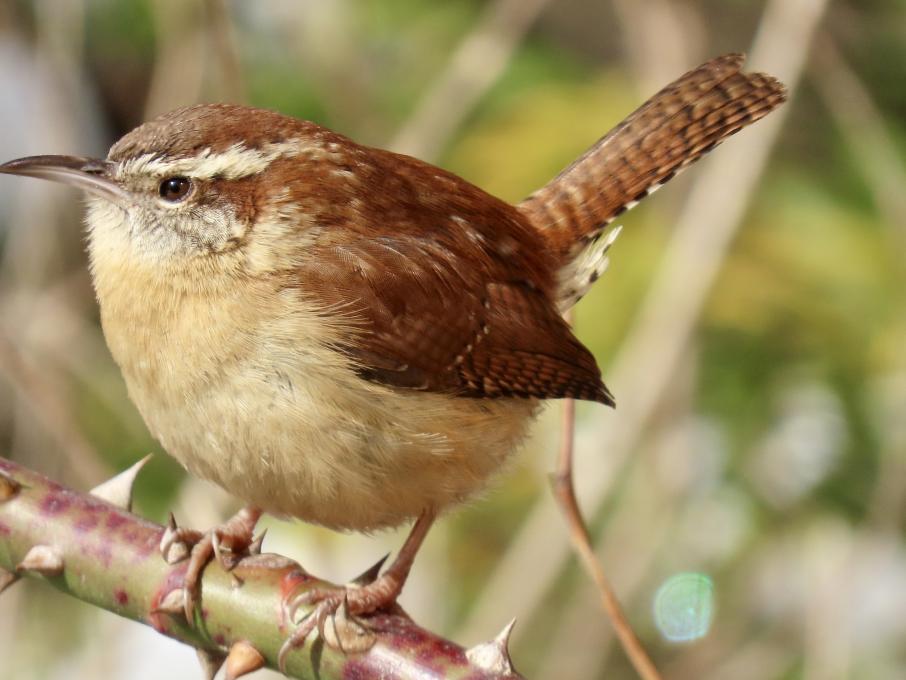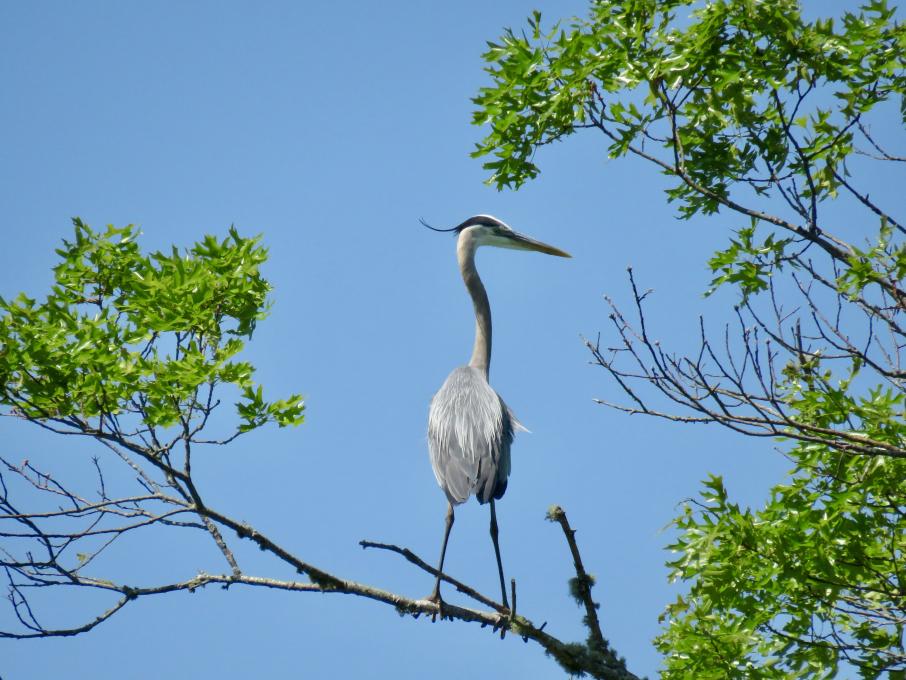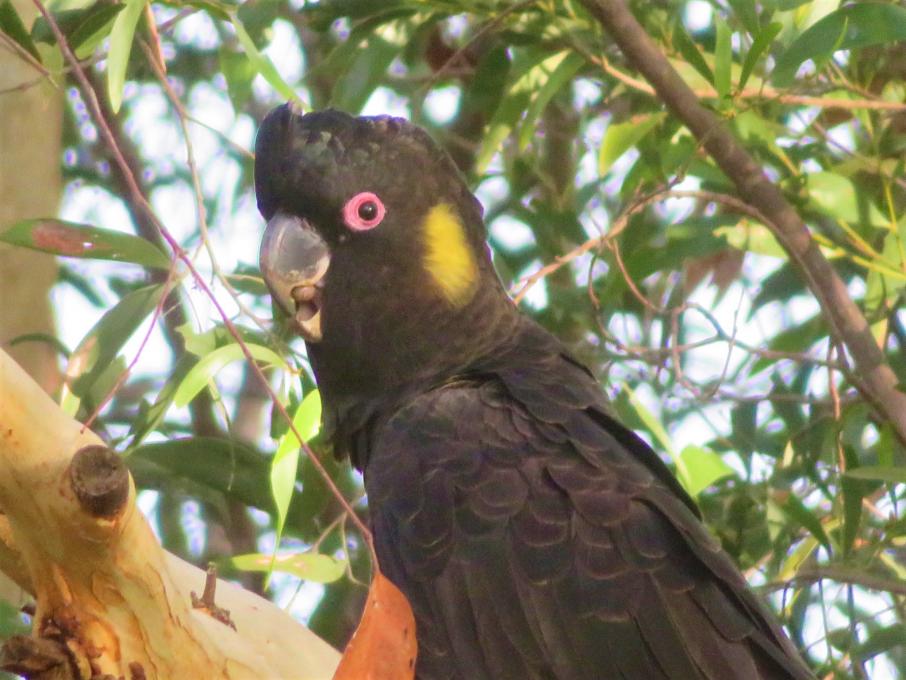The Cornell Lab Bird Academy › Discussion Groups › Bird Photography with Melissa Groo › Practice Matching Your Gear to Your Goals
-
Bird AcademyBird AcademyWhat goals did you set for yourself? What gear do you need to make that happen? Share in the discussion below.You must be enrolled in the course to reply to this topic.
-
I have always taken photos of perched birds. I have an opportunity to travel to Hog Island, Maine this June and need better equipment. Last year, I purchased a Nikon Z-5 and this past week, after watching the lesson on equipment, I purchased a 200-500 zoom lens (used), a Chronicle tri-pod, and a Think Tank backpack. I wanted a back pack with a hip belt to take the load off of my shoulders, and this backpack is perfect for me. I was looking at the more expensive tri-pods, but the camera specialists kept bringing me back to the Chronicle tri-pod which is one of the best sellers. I tinkered around with my gear at home then went in search of birds. All of our ponds are frozen over, so I was unable to locate winter ducks. I could see Canada geese in fields, but there was no place to safey pull off the road to take photos. Next week, I will venture out to the wildlife refuge a few hours from home to capture some images. Below is a perched bird which was an easy shot. Best of luck everyone with your photos:)

-
I have always loved birds and nature but it wasn´t until I had an accident last year and I was forced to remain still to heal that I wanted to capture them in a photo. I spent a lot of time looking out of the window and watching the birds and their behaviour. When the baby birds started flocking to my garden I was hooked and started taking photos with an I-phone which for bird photography wasn´t really ideal. So my husband saw my passion and he gifted me an OM-5 for my birthday and now I am trying my best to capture 150 different birds in my area throughout this year as my goal. I am not sure I have the best camera for bird photography and capturing birds in flight clearly is potentially not going to work, but I´m trying my best with the equipment I have. For me the OM-5 is a good weight because I do have a shoulder injury.
 unedited photo : Collared Dove
unedited photo : Collared Dove -
My current camera is an OM systems OM-1. I chose the OM-1 because it's a micro 4/3, so it's smaller and lighter weight than full frame cameras. And their cameras are really designed for wildlife photography. My first bird lens was their budget 75-300 mm and it helped me learn at a good price point. This summer, I talked to an OM systems rep at Kenmore Camera near Seattle, explaining that I want to do bird photography but I'm unwilling to carry a huge lens. This becomes more of an issue as you get older and have the inevitable aches and pains in hands, arms, back, and shoulders. The rep recommended the OM f 2.8 40-150 (80-300 equivalent) mm pro lens with a 1.4 teleconverter. It's a great setup, not too heavy to carry and good in low light. I'm not a professional photographer, and can't afford their $7500 lens anyway. Here's one of my first photos of a Bewick's wren with my new lens.

-
I bought myself a Nikon Coolpix P950 because all I want to do right now is document my life list and occasionally share come pictures on Instagram for my friends. I was flipflopping between a handful of bridge cameras and some mirrorless, but settled on the P950 when I saw that a bird influencer I like on IG uses it. If it's good enough for her, it's good enough for me. I live in a major urban environment and do not have enough time to get into more natural areas, so the P950 is fine right now. I see the same birds nearly every day and I am using these opportunities to get better at the non-gear aspects of photography. My 2025 goal is to get a decent picture of every local bird in my city. My general goal is to improve my photography skills so that if I get to go on a once-in-a-lifetime wildlife-themed trip, I can get a better DSLR or something and already have a strong skill base.
-
In a few months I am taking a special trip to Costa Rica and decided to upgrade my equipment so I can photograph wildlife, both for ID purposes and pleasure. Locally I like adding photos to my eBird checklists. I started off purchasing a used Tamron G2 lens, 150 mm to 600 mm. It’s heavy but only 1/2 the weight of high priced competitor lenses like Sigma or Sony. It has vibration control for handheld shots, so I’ve been carrying around with a Cotton carrier and shooting handheld. I also added a wrist loop to help me hold it as I’m discovering muscles I clearly have not been using (ouch). Next I decided to upgrade my camera body and purchased a used Nikon D500. It’s a crop sensor, older camera that still comes highly recommended for amateurs. I took the setup out for the first time this past weekend and I’m pleased at the quality even my first time out. I like the classic portrait shots—sharp, detailed, with background blur. This mockingbird photo is an example of that. But ultimately I want the portraits to show behavior/personality so they stand out, and because I’m a birder. It’s more difficult because of the movement. So-I’ve been shooting RAW and post editing in Lightroom. It has blown my mind how much detail can be saved in this format even when I’ve horribly underexposed the image. My favorite part of this whole journey is when I check Lightroom to reveal what I’ve managed to capture.


-
I have to add, I went over to the Macaulay Library and found a photographer whose work I admired very much. When I looked to see what camera he uses… it’s the D500 like me! I was actually questioning if I should have gotten a full frame camera instead so this was encouraging to see what is possible with the setup I already have.
-
-
I decided I wanted to purchase a Rebel T8i camera and get a 200-400 mm lens to start. Right now I use a bridge camera and I’m looking forward to an upgrade. I appreciated all the options Melissa talked about and I’d really like to try the extra gear once I get used to the new camera and lense
-
I already have a Kodak Pixpro 405AZ with 200mm lens and 40x telephoto lens built in. I have to get a tripod and I think I want to get a tripod with "ball" head as I don't have a long heavy lens and it will give me the smooth action of positioning the camera that I am searching for. I have been using my car as a hide and using my old rifle gun pillows as platforms to take pictures. I no longer hunt in my older years but find that many of my clothes from hunting allow me to get close to the birds for excellent photos and also using the skills I used to use while hunting such as sitting still for long periods of time, blending into the trees and surroundings, and building myself natural blinds out of surrounding brush.
-
I would like to transition from a bridge camera (Nikon P950) to a Mirrorless Canon RF 100-500mm to help me capture birds in flight and in low light. I would like to improve the quality of photographs as I grow and learn to become a better photographer and birder. I am based in Iceland where there is not much cover to hide and high winds. I prefer to use my car as a hide. I travel a great deal. Not sure what temperature range this camera and lens can handle regarding the cold. The ground is pretty rocky and uneven. I do have to walk in to some birding areas. I love nature and landscapes. I have the correct clothing to explore in the outdoors in different conditions. Canon RF 7 CanonRF 100-500mm 3 x Canon camera batteries Lens protector Dry bag Rain cover Tripod with pan head (unsure if a ball head would cope with weight?) Bean bag or lens sack Shoulder strap (Found the knee and elbow pad tip very useful)
-
I recently bought a Canon Rebel T7 for landscape photography but my friend recommended I get a 70-300mm lens with it. I haven't tried it out yet but I know the photos I'm drawn to are ones of the birds, usually with the focal point being on them. So blurred backgrounds are okay for me. I got a cheaper tripod when I bought my camera but I'm sure I can upgrade if I feel the need to. As well, my dad hunts so I can borrow his clothes to go camouflage myself and my camping gear I keep in my vehicle has items like a mat I can use to sit down on. The big thing I noted was that Teleconverter lens. That looked really useful! So my goal would be to look into canon's verions of them as well as getting used to my camera.
-
I just bought a bridge camera (SONY RX10 IV) for documentation and identification. I have just been birding for a year, and still pretty much enjoy observing bird behaviors and discovery of new species. Though taking high quality images is appealing to me, too, I realized birdwatching and bird photography requires quite different strategies. So at the moment I still prefer simply watching than taking photos, but it's still satisfying to get some nice shots during birdwatching. Recently I found it can take pretty amazing photos in great lighting conditions, and when the bird cooperates. I will first fully exploit the budget camera I have now, to understand its limits and try to realize its full potential.
-
I want to be able to obtain good quality pictures of birds, either in flight or in their natural habitat, for identification purposes and for their documentation also.

-
I feel the pictures that are highest quality of the bird itself more than the background is what I’m leaning more towards. I like the bird to be the center of attention. For me alone, being fairly new to birding, I find bird identification most important over getting crazy shots. To enjoy the animal just being itself and having it clear and pleasant to the human eye is my main focus and goal. I realize I like shots taken by Canon, with the f stop of around 5.6 and a focus length around 600.
-
My emerging life as 'photographer' (not sure I deserve that title) is about compromise. When I run on trails, I often take a lighter camera along to catch moments that catch my attention. While not truly light, I use the Nikon D3500 with a 70-200 zoom for that purpose. If I slowly walk around birding, I switched to a mirrorless camera with 150-500 zoom. I love observing and also capturing behavior that teaches me more about the subjects I watch.

-
I have always been quite captivated by birds, their beauty and behavior and I cherish the memorable moments and encounters I've had. In addition to having those memories, I wanted a way to capture those moments so they would last forever and provide an accessible way to share my experiences and passion with others and document my life list. At this point in my wildlife photography journey, it is not my goal to take photos that will end up in calendars, but rather to take pictures that make me smile as I remember the moment and demonstrate my adoration of the birds I see. As an unemployed 16 year old, I don't have the means to purchase thousands of dollars of lenses and I'm able to achieve my goals with something more portable anyway so I've purchased a Nikon Coolpix P950. This camera allows me to take pictures of the backyard birds I see on a daily basis, document unique experiences and notice details I wouldn't focus on otherwise. I'm hoping to take this camera with me on my upcoming exchange to France to document the new birds and experiences I will see there!

-
The detail in this shot is really great- I owned a coolpix in the late 90s and it’s incredible to see how far they have come. Thanks for sharing what is possible with a bridge camera.
-
-
Hello everyone, the goal which I have set for myself is to be able to click high quality pictures of birds, either in flight or in their habitat. The gear which I would need to make that happen is an APS-C (crop sensor) DSLR camera with a super telephoto lens (< 300 mm). I have purchased the Nikon D1500 DSLR camera and all I need is a super telephoto lens. Below is the clearest picture of an Australasian Swamphen, I could get till now with this camera.

-
My first photos were taken just trying to get photos of birds (and learning my gear and basic photography skills), and while taking those photos back into the Adobe ecosystem and doing some very modest enhancements, I realized that I just wanted to see the birds up close, to look into their eyes, eyes that are always without guile, I wanted to see the individual feathers, the droplets of water clinging to their feathers, the eyelashes, all of this, I wanted portraits of the birds, and my gasps and moistened eyes when a beautiful portrait of a beautiful bird appeared, or emerged, out of a photo I had taken was where I wanted to go with my bird photos. And so, it’s bird portraiture that I gravitate towards – such an intimacy there. The gear I decided I needed for this was a prime telephoto lens (lightweight and incredibly high quality photos) and of course a really, really sturdy tripod, plus a mirrorless camera – everything lightweight and top quality and sturdy/rugged, so that carrying and use are easy (I’m a little older and less sure on my feet and a bit more shaky with my hands than I used to be). The equipment is perfect and the portraits of birds are just magnificent and give me incredible pleasure. Perhaps later I’ll move to birds in flight and such, but for now, I’m in my sweet spot.

-
I have purchased a Nikon P1000 which I love because it is a point-and-shoot with amazing zoom capabilities. I have used it in the field to “see” birds that I cannot see with my binoculars. I would have to say that my goal is simply documentation. I use photographs to ID birds that I am unable to ID in the field. It also turns out that my friends really enjoy the pictures that I share with them. I have taken the screens out of several windows to make myself an indoor “blind”. This seems to work well. I have also found that whether I am on the back patio or in the field, simply sitting still works very well. Sitting still (with a book to help pass the time) I was treated to wonderful observations of these Kildeer.

-
Hi Whitney, Thanks for sharing. For the past year I've been enjoying bird photography with my Canon SX 70 bridge camera. I too am mostly sharing my pics with friends-and driving baristas crazy sharing in the coffee shop. I am considering the P 1000 for that little bit extra shooting waterfowl at a distance. This past year has been all about; seeing bird, finding bird in viewfinder, zoom & shoot before the tiny bird flies off-so much fun! Happy birding! Here's a beauty Bufflehead the other day. Bruce, Bronx, NYC

-
-
Desde niño escuché el llamado de las aves cuando visitaba los bosques de Totonicapán, Guatemala, pero es hasta ahora que mi relación con el bosque se ha hecho más estrecha, y dentro de los elementos del bosque encontré que las aves me llamaban poderosamente la atención, traté de buscar estudios o bibliografía sobre aves en Totonicapán, pero fue muy poco lo que encontré, así que decidí a hacer mis propios reportes, al hacerlo entendí que si no tenía elementos de prueba, por ejemplo, reporté un nido de halcones peregrinos, algo que no es muy común en mis latitudes, por lo que e-bird me pedía alguna foto, eso me motivo a conseguir una cámara para documentar de mejor manera mis observaciones, actualmente tengo una Nikon D-2500, y utilizo un lente 75-300 mm. Y para mi es motivo de mucha alegría compartir en este curso, en el que estoy aprendiendo muchísimo.
-
Something I have found regarding blinds (or hides) is that I am able to get closer to shore birds if I am in kayak rather than on land. I would never have been able to get anywhere near to this Variable Oyster Catcher and chick if I approached on the beach. Yet in my yellow kayak, bright orange lifejacket, I could get within about 10 metres with it seemingly oblivious to me. I think it helps if I am moving I think if only slowly drifting. I'm using a Lumix FZ1000 bridge camera. My aim is to document what's there and use the photos as visual reference.

-
Cool!
-
-
I've been taking photographs of birds for many years. I'm a backyard birder and have a home on a lake, so I get lots of waterfowl, songbirds and birds of prey. I also live near the ocean, but haven't yet ventured into that kind of photography - hoping to learn some tips, and already have! I have yet to use any blind tools as most of my photos are taken from inside my house through a window. I realize this is a drawback, but I am pleased with my photos. At the lake, I do believe a blind would be helpful, particularly with all the migrating ducks, which are plentiful. My gear consists on my "go-to" Canon Powershot XS-70 and my Canon EOS Rebel T8i. I only have the 75-250mm lens for my T8i at this point, which limits my ability to get close up shots - but it often produces better quality. I look forward to the rest of this course as I struggle with the auto focus at times, which causes me to lose a shot because by the time it finally focuses, the bird is gone. I like the Powershot as the zoom is 21-1395mm, which allows me to not disturb birds if I'm on my dock out on the water. In researching the photos on Macaulay, I found that many of the photos I chose to click on were taken with a bridge camera, so I think I'm in good shape. Blinds and perhaps the device that extends the zoom (forgetting the name as I write) are tools I will purchase.



-
I have had a lifelong interest in birds but have only started photgraphing them about 18 months ago and haven't really taken the time to think about my goals before now. I often spend my down time just looking through photos on ebird to see what's been seen lately in my local region, state and in other parts of the country. I've mainly done this just for enjoyment of looking at the birds and learning but haven't really thought about what type of photos I enjoy the most or therefore what my specific goals are. Now that I've had some time to think about this my favourite photos are habitat related; for me I particularly enjoy photos of birds in the Australian bush, in a wetland environment or along the shoreline. My goal is a) to take decent photos of birds in these environments, and b) to also capture any unusual or less common birds that i see incidentally- for me usually this will be when out hiking or just on my daily walk. At this point in time I post every decent shot I take on ebird but only use facebook occasionally and I don't have instagram. I do follow some of the bird groups on Facebook but prefer to post to ebird as it enables me to just look and learn about birds without having to use social media. For goal a I have my big camera (Canon EOS 1100D with Tamron 150-600mm lens) for birding focused outings where I'm not going to be walking too far, for goal b I carry my small camera (Canon Powershot SX 720HS) in my pocket just in case I see something out of the ordinary. Here is a favourite shot of mine I took at Christmas time 2022, it was just near home on my regular walk and on this particular morning I was glad I was carrying my small camera. For my smaller camera I sacrifice image sharpness but at least I still capture those special sightings that pop up from time to time when I'm not carrying my big camera, this one is a Yellow Tailed Black cockatoo that was part of a small group feeding in eucalyptus trees at my local lake about 5 mins walk from home. These birds fly overhead my local area at certain times of the year but this is the first time I've been able to photograph them almost at eye level.

-
As a beginning/novice birder, my goals right now are to recognize birds by sound and sight and to create lists to familiarize myself with as many species as possible. But, I am also a nature photographer (not just birds) by nature. Thus far, I've only been using my camera phone with a magnifier for binoculars, but I want to start upgrading (on a budget). As such, I think I will begin with a camera with a focal length between 500mm-600mm and a f/stop of f/5.6 or higher. I'm leaning towards a fixed lens to begin and maybe a teleconverter, rather than lugging around a huge lens. I mostly walk and hike when I'm birding (I don't own a car!), so portability is a key consideration.
-
Hello, I consider myself a slight beginner/amateur wildlife photographer, and I love this Course, I've actually never really thought about the teleconverters, I currently own a Canon 7D Mark II, with a Tamron f/3.5-6.3, 18-400 mm lens, and some of my photos I would like them to have been closer, so I think I am going to check into purchasing a teleconverter, I actually had thought about going bigger on my lens, but I think a teleconverter might be what I am looking for.
-
My goals as a young beginners photographer are to explore more areas where I live and to start getting more clear photos. I have a Canon 2000d with a 75-300mm lens. As I get more advanced I hope to purchase a more expensive brand so I can get closer to wildlife. As of right now, I am purchasing cheaper camera products.
Read More:

 unedited photo : Collared Dove
unedited photo : Collared Dove 


